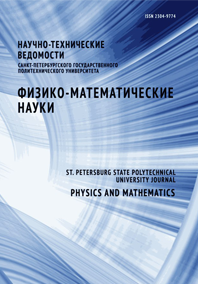Determination of the isoelectric point of the antibody to SARS-CoV-2 by molecular modeling for conjugation with quantum dots
Rapid and effective diagnosis is an integral part of the infectious disease control system. One of the promising directions for achieving this goal is the creation of a biosensor device consisting of a biologically active component (antibody) and a fluorescent label that produces an analytical signal. A necessary condition for the conjugation of proteins with a label is the preservation of their specific activity, since this factor determines the reliability of the analysis result. Violation of the ability of antibodies to form a complex with the antigen directly affects the result of the analysis. A fundamental property of antibodies and other proteins is the isoelectric point, which is defined as the pH at which the macromolecule carries no net electrical charge. Knowing the surface charge distribution and the total pI, it is possible to predict the behavior of the antibody-substrate complex. The isoelectric antibodies to Sars-Cov-2 CA521 FALA (PDB code 7e23) equal to 7.4 were calculated using the molecular modeling method using the Amber complex. Based on the results obtained, the covalent conjugation of this antibody with multilayer chalcogenide quantum dots was carried out by carbodiimide binding in combination with sulfo-N-Hydroxysuccinimide. The quantum dot-antibody complex was tested in an immunochromatographic assay and showed a 200% increase in fluorescence in the test and control zones, indicating successful conjugation under pH conditions below the isoelectric point.


